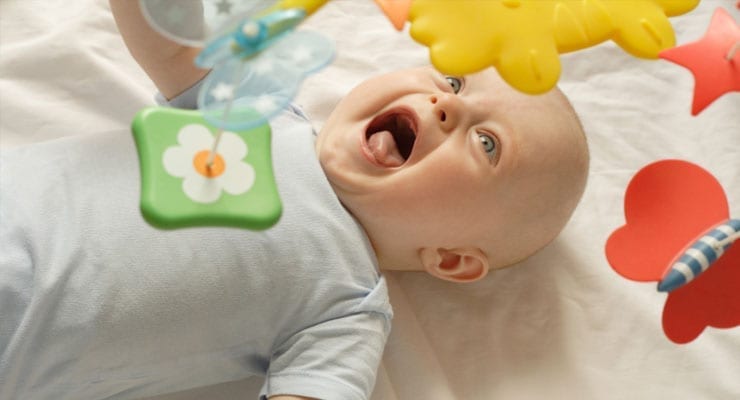As a baby’s vision improves, she is better able to distinguish between different shapes, colors and movements.
While babies are able to see from birth, your baby is very nearsighted and can only focus on what is about a hand’s distance from her face. Guess what! That is about the distance your face is when you are feeding or holding her! So, make sure she gets plenty of opportunities to stare at and become familiar with your friends and family’s faces because, while she may be smiling at you from the day she is born, your baby will take a little time to get to know the others around her.
One pretty cool thing I learned, I was the best looking thing in the world to each of my babies. With no flaws, no imperfections, momma is every baby’s fashionista super model!
By about 3 months old, your baby will start to smile at familiar faces, including her own in the mirror! At about six months, your snookums will be stealing hearts with all of the giggles and coos and enjoying more social interaction. At this age, babies also begin to study faces in more detail and will begin to express both positive and negative emotions through her own facial expressions.
You might be surprised to know that newborn babies can see only black and white and grays at first. It is not until about babies are 4-5 months old that they are able to see the entire spectrum of color, starting with reds and ending with blues. Contrasting and bold colors will be easier for your baby to distinguish from more subtle colors, so look for these qualities in toys-and even in your shirt selection!
Touch & Play
Your baby’s sense of touch is getting better. The sense of touch is most developed in their lips and gradually develops to your baby’s arms and legs.
Provide colorful objects of different textures, shapes and sizes for your infant to hold and explore. This is a good age to introduce an infant gym with interesting objects that dangle for your baby to bat at. Or hold a toy just out of reach for your baby to reach for, swat and grab hold of. Just don’t string up toys on cribs or other baby equipment -your baby could get tangled in them. An infant gym will also provide a soft textured surface for baby to learn to roll over on as she gets a little older.
Around six months, your baby will be able to explore more details of these toys, especially as she develops the ability to pick things up with her thumb and forefinger, which is also called the pincer grasp. This helps the baby to be able to play more easily with toys that include movable parts and discover how to manipulate them.
This is also a great time to start playing games like hide and seek. Hide your baby’s favorite toy under a small blanket and giggle with her as she starts to search for it. Do the same thing by hiding your face and making a silly face and congratulating her every time she “finds” you again.
At times your baby will have had enough stimulation. Watch for signs that your little one might be over stimulated and ready for a break. These signs might be that your baby is turning away from toys or objects or getting fussy or making uncomfortable faces in response to stimulus.
XOXO Dr. Jen





